
When the sheer number of cables in your data centre becomes an untraceable chaos, or when cable labels don't stay attached or become illegible, it's time to seriously consider a professional label printer.
Ask yourself how much money you could lose trying to trace an unidentified faulty cable, wire or component while servers, services, machinery or production lines are down? This is when professional labelling pays off.
A challenging environment
A data centre or server room offers a number of challenges for non-adapted label printers. Above all, you will need a printer that can print label materials that stay attached to extremely curved surfaces, like cables.
You may also want a label printer that can print on flag labels to minimise contact with fibre optic cables. If your data centre or server room includes a mix of high and low energy surfaces, it is best to select a label printer that offers labels to reliably identify both. Another challenge to overcome is the heat generated by any number of servers that may cause labels to become illegible over time.
Benchtop, or portable?
Perhaps the first choice to make is whether you need a benchtop or portable label printer. Benchtop label printers are generally better suited when printing large volumes of labels, up to 7 000 a day, or extreme precision labels.
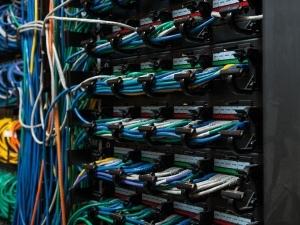
"Portable label printers can still easily handle a 1 000 labels per day, and offer additional flexibility as you can easily take your printing capabilities with you", says Cindy Van den Bremt, Product Manager Portable Printers at Brady Corporation.
"In a way, you could at once plug in a new cable with one hand and print its identification label with the other. Portable printers have software installed to design a number of labels. That means you don't have to carefully plan in advance which labels you will need to print. Simply carry a portable printer with a few choice label cartridges in a practical case and you will have the flexibility to print the labels you need on the spot."
Printer features
"The challenges posed by a server environment result in a list of both critical and nice-to-have features when considering a professional label printer," says Van den Bremt.
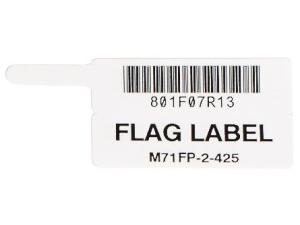
* Power supply: Lithium-ion or Nimh, both certified for safety by external parties. You absolutely don't want the battery to start a fire.
* LCD display: A clear full colour or monocolour display can show labels as they will be printed 'what you see is what you get'. The display should be sturdy so it doesn't crack when dropped accidentally.
* Label design: built-in label design capabilities are nice to have, because they enable users to quickly design and print a variety of cable flag labels and wrap-around labels, patch panel and outlet labels, and circuit breaker labels with serialised codes, barcodes or QR-codes.
* Label cutter with retention: avoid frustration by selecting a label printer with label retention. Some printers will retain a label after cutting, others will simply drop it to the ground if you're not fast enough.
* Excellent wearability: when selecting a portable label printer, make sure it is easy to take with you in the field, and that it offers hands-free options, like a magnet or lanyard or that it can be fastened to a belt.
Standards and specifications
A number of critical features can be third-party certified to international standards and norms. Technical printer specifications may also refer to these standards.
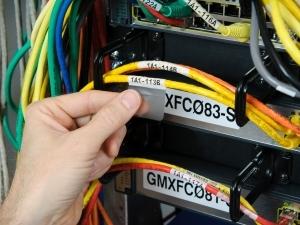
* FCC Class A identifies the printer as fit for industrial use, as opposed to class B which is better suited for residential use.
* UL certification: UL or Underwriters Laboratories is a global safety consulting and certification company. Among others, they have established a safety norm for lithium-ion batteries.
* WLAN 1EEE802-11 b, g, or n.
* Drop-test: a variety of military standards exist for drop testing. A portable label printer should be able to survive an accidental fall from 1m20.
A label for your needs
When selecting a label printer to professionally identify copper and fibre optic cables, power cables, racks, electronics, cabinets and circuit breakers it's important to check whether the printer can print on a label that satisfies your needs.
"Reliable labels that stay attached and remain legible will support troubleshooting and maintenance, labels that fade or fall to the ground will not. Together with its adhesive, the label substrate material determines how well it will remain attached to specific surfaces. Labels are available in paper, polyethylene, polypropylene, polyolefin, vinyl, polyester, polyvinylfluoride up to polyimide for identification in high heat and printed circuit board production."
Choice data centre or ICT identification labels include:
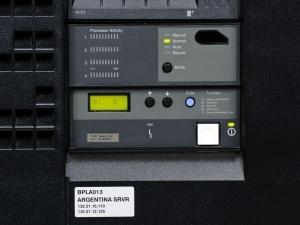
* Polyester labels in a variety of sizes to identify racks, bays, frames, slots and other tele- and datacom equipment. They are available as non-adhesive labels to cut to length and slide into patch panel inserts or to be fixed with an adhesive.
* Metallised labels for applications like rating and serial plates with barcodes, alpha-numerics, graphic symbols and logos that require nameplate-like quality.
* Self-laminating vinyl cable labels have a printable zone with a durable translucent over-laminate which wraps around the label to protect the text from fading and abrasion.
* Matt topcoated polyimide wire wrap labels for cable and wire bundle identification and labelling applications where self-extinguishing properties are required. These are available in multiple colours.
* Polypropylene cable flags to identify fibre optic cables. The material is very flexible and comes in P- or T-shaped flag label formats to minimise the contact surface between the label and the fibre optic cable, while maximising space to print on.
* Nylon cloth cable flags allow for easy folding around wires and can be printed on both sides. They offer good resistance against heat, cold, oil, dirt and chemicals.
* Polyethylene wire marker tags are suitable for durable terminated wire marking for electrical devices and fibre installations.
Top 3 things to consider
"When selecting a label printer, I think there are three things that should always be considered, no matter in which environment the printer will be used", says Van den Bremt.
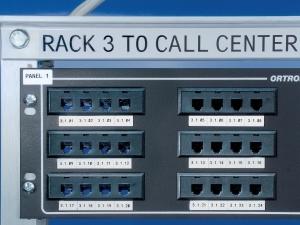
* Printer ruggedness: A printer for professional use should be able to survive the wear and tear of everyday intensive use. Select a device that has been drop tested so the LCD display doesn't crack if the printer falls.
* Easy to handle: Select a printer with easy to load, 'drop, lock and go' cartridges so you can easily switch to another label material. Make sure labels are easy to design on your label printer. Also make sure the printer screen is clear and easy to read and that it shows the label as it will be printed to avoid loss of time and labels. And pick a printer with label retention, so your self-adhesive labels don't stick to the floor.
* The labels you need: Make sure you chose a printer that can create the labels you need with the right sizes, colours, formats, prints. Your labels should be reliable and should stay attached and remain legible in the specific environment they will be applied in.
SPONSORED CONTENT
If you need a label printer, if you want to optimally integrate a label printer in your existing work processes, or if you are curious about reliable, professional ICT labels, contact Brady for printer specifications, a printer demo, a site visit or label samples via emea_request@bradycorp.com or via the Brady Web site.
Share